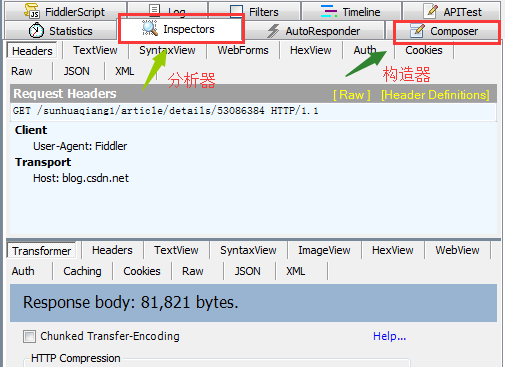FastText 是 Facebook AI Research 提出的 改进版 Word2Vec,可以: ✅ 利用 n-grams 处理未登录词
比 Word2Vec 更快、更准确
适用于中文等形态丰富的语言
完整的 PyTorch FastText 代码(基于中文语料),包含:
- 数据预处理(分词 + n-grams)
- 模型定义
- 训练
- 测试
import torch
import torch.nn as nn
import torch.optim as optim
import numpy as np
import jieba
from collections import Counter
import random# ========== 1. 数据预处理 ==========
corpus = ["我们 喜欢 深度 学习","自然 语言 处理 是 有趣 的","人工智能 改变 了 世界","深度 学习 是 人工智能 的 重要 组成部分"
]# 分词
tokenized_corpus = [list(jieba.cut(sentence)) for sentence in corpus]# 构建 n-grams
def generate_ngrams(words, n=3):ngrams = []for word in words:ngrams += [word[i:i + n] for i in range(len(word) - n + 1)]return ngrams# 生成 n-grams 词表
all_ngrams = set()
for sentence in tokenized_corpus:for word in sentence:all_ngrams.update(generate_ngrams(word))# 构建词汇表
vocab = set(word for sentence in tokenized_corpus for word in sentence) | all_ngrams
word2idx = {word: idx for idx, word in enumerate(vocab)}
idx2word = {idx: word for word, idx in word2idx.items()}# 构建训练数据(CBOW 方式)
window_size = 2
data = []for sentence in tokenized_corpus:indices = [word2idx[word] for word in sentence]for center_idx in range(len(indices)):context = []for offset in range(-window_size, window_size + 1):context_idx = center_idx + offsetif 0 <= context_idx < len(indices) and context_idx != center_idx:context.append(indices[context_idx])if context:data.append((context, indices[center_idx])) # (上下文, 目标词)# ========== 2. 定义 FastText 模型 ==========
class FastText(nn.Module):def __init__(self, vocab_size, embedding_dim):super(FastText, self).__init__()self.embeddings = nn.Embedding(vocab_size, embedding_dim)self.linear = nn.Linear(embedding_dim, vocab_size)def forward(self, context):context_vec = self.embeddings(context).mean(dim=1) # 平均上下文向量output = self.linear(context_vec)return output# 初始化模型
embedding_dim = 10
model = FastText(len(vocab), embedding_dim)# ========== 3. 训练 FastText ==========
criterion = nn.CrossEntropyLoss()
optimizer = optim.Adam(model.parameters(), lr=0.01)
num_epochs = 100for epoch in range(num_epochs):total_loss = 0random.shuffle(data)for context, target in data:context = torch.tensor([context], dtype=torch.long)target = torch.tensor([target], dtype=torch.long)optimizer.zero_grad()output = model(context)loss = criterion(output, target)loss.backward()optimizer.step()total_loss += loss.item()if (epoch + 1) % 10 == 0:print(f"Epoch [{epoch + 1}/{num_epochs}], Loss: {total_loss:.4f}")# ========== 4. 获取词向量 ==========
word_vectors = model.embeddings.weight.data.numpy()# ========== 5. 计算相似度 ==========
def most_similar(word, top_n=3):if word not in word2idx:return "单词不在词汇表中"word_vec = word_vectors[word2idx[word]].reshape(1, -1)similarities = np.dot(word_vectors, word_vec.T).squeeze()similar_idx = similarities.argsort()[::-1][1:top_n + 1]return [(idx2word[idx], similarities[idx]) for idx in similar_idx]# 测试
test_words = ["深度", "学习", "人工智能"]
for word in test_words:print(f"【{word}】的相似单词:", most_similar(word))
1. 生成 n-grams
- FastText 处理单词的 子词单元(n-grams)
- 例如
"学习"会生成["学习", "习学", "学"] - 这样即使遇到未登录词也能拆分为 n-grams 计算
2. 训练数据
- 使用 CBOW(上下文预测中心词)
- 窗口大小 = 2,即:
句子: ["深度", "学习", "是", "人工智能"] 示例: (["深度", "是"], "学习")
3. FastText 模型
- 词向量是 n-grams 词向量的平均值
- 计算公式:

- 这样,即使单词没见过,也能用它的 n-grams 计算词向量!
4. 计算相似度
- 用
cosine similarity找出最相似的单词 - FastText 比 Word2Vec 更准确,因为它能利用 n-grams 捕捉词的语义信息
| 特性 | FastText | Word2Vec | GloVe |
|---|---|---|---|
| 原理 | 预测中心词 + n-grams | 预测中心词或上下文 | 统计词共现信息 |
| 未登录词处理 | 可处理 | 无法处理 | 无法处理 |
| 训练速度 | 快 | 快 | 慢 |
| 适合领域 | 中文、罕见词 | 传统 NLP | 大规模数据 |



















